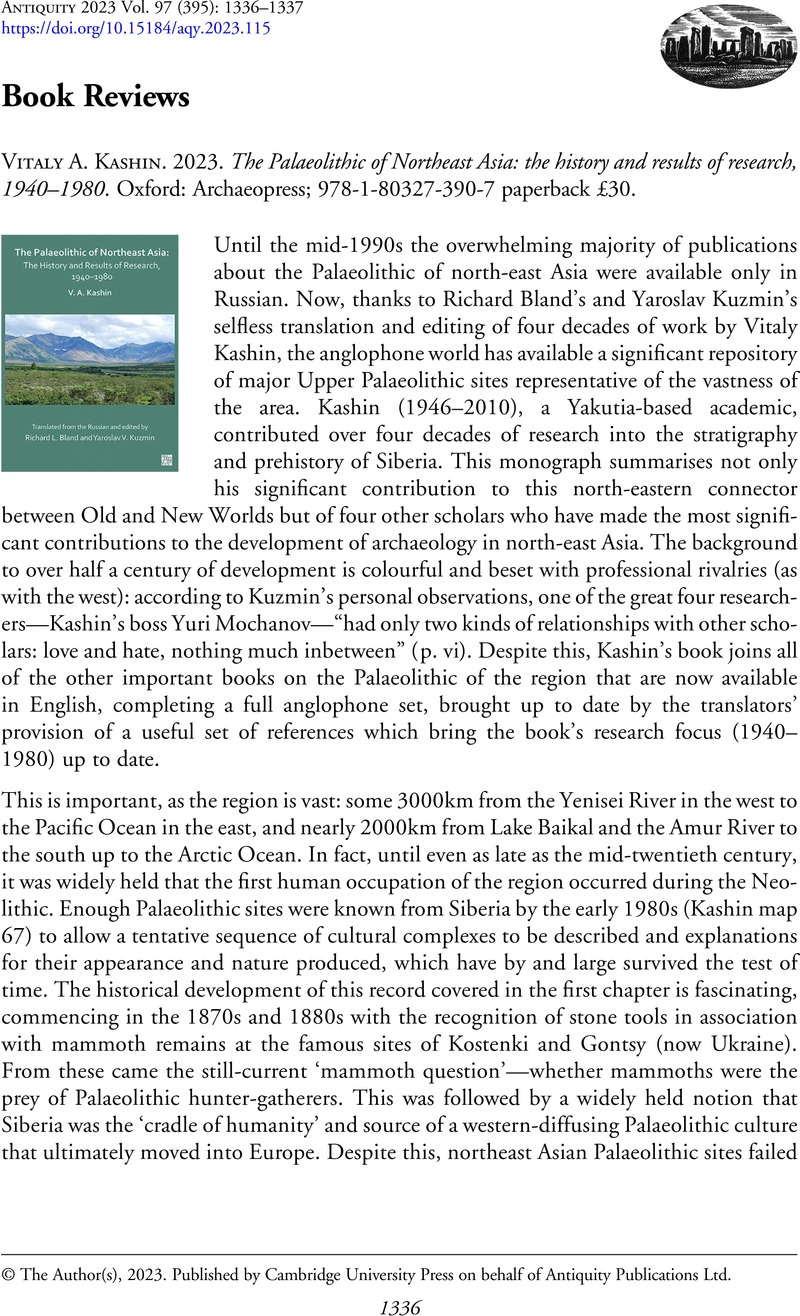No CrossRef data available.
Vitaly A. Kashin. 2023. The Palaeolithic of Northeast Asia: the history and results of research, 1940–1980. Oxford: Archaeopress; 978-1-80327-390-7 paperback £30.
Review products
Vitaly A. Kashin. 2023. The Palaeolithic of Northeast Asia: the history and results of research, 1940–1980. Oxford: Archaeopress; 978-1-80327-390-7 paperback £30.
Published online by Cambridge University Press: 11 October 2023
Abstract
An abstract is not available for this content so a preview has been provided. Please use the Get access link above for information on how to access this content.

- Type
- Book Reviews
- Information
- Copyright
- Copyright © The Author(s), 2023. Published by Cambridge University Press on behalf of Antiquity Publications Ltd.


